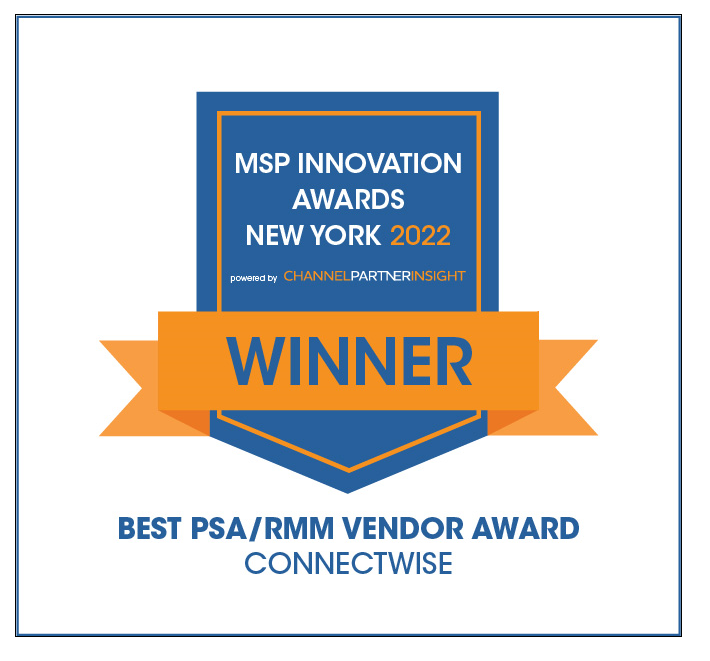The sales incentives used by the most successful services-led solutions providers
It can be challenging for product-centric businesses to adopt a services-led model. But throughout this transition and beyond, one of the most powerful sales tools leadership can employ is incentivized compensation. Top-performing services-led providers use a gold standard ‘carrot and stick’ compensation model that helps motivate salespeople and drives growth—ensuring that the business and employees alike can be successful.
In a recent webinar, Scott Marshall, ConnectWise’s Senior Vice President of Marketing, and Paul Dippell, CEO of Service Leadership, Inc., sat down to discuss how you can seamlessly transition to a services-led sales incentive model. Keep reading to learn successful sales incentive strategies used by high-performing organizations—and some common pitfalls to avoid.
What are some common commissions mistakes to avoid when setting sales incentives?
Product-led businesses tend to be at a lower operational maturity level (OML) than services-led companies. And most of the incentive pitfalls they stumble into while becoming services-led stem from letting sales representatives dictate the strategy, rather than following it.
Leaders need to align the sales team with the company’s overarching strategy and financial goals. To do this, strong services-led companies focus on intentional incentives that steer the sales team toward long-term growth. The most successful compensation models maintain your company’s north star and allow employees to earn excellent compensation—without exceeding your expenses.
Best-in-class companies have two primary strategic and financial goals: reaching 11.5% profitability and growing around 15% each year. To achieve these goals, here are a few common mistakes to watch out for:
1. Setting the same commission rate for services and products
Many owners are tempted to pay services and products at the same commission rate. After all, every dollar earned from a services sale is worth as much as a dollar earned from a product sale, so why should one type of sale pay more?
This outlook doesn’t take into account the higher risk to the business of not meeting its services margin. If you don’t sell a product, it’s the vendor that feels the sting. But if your managed services offering is not being fully utilized, you pay the price for that lost productivity. That’s why successful services-led organizations pay a higher commission rate on services—because ultimately, dollars earned from services do have a bigger impact on your bottom line.
2. Paying full product commissions—even when service quotas aren’t met
If reps can get away with mostly selling products without it hurting their commission, some will continue to do so. It feels safe and familiar, so why should they change their behavior?
To nudge them in the right direction, top-performing companies set quotas for services sales. If a rep doesn’t meet their quota, a percentage of their commissions on products are held back. That way, they can still make good money from selling products, but they have a strong incentive to sell services, too—easing the transition to services-led behavior.
3. Misleading reps into thinking they’re selling services at profitable prices
When companies aren’t selling enough services to make the gross margins they could be making if their techs were fully utilized, they can struggle to figure out what rate to set services commissions at. To get around this, they often make up a gross margin and base the commission rate on that.
Unfortunately, this can mislead reps into thinking they’re selling at profitable prices. That’s why top performers aim to calculate the real service margin and tie commissions as closely as possible to that margin. This helps the sales reps understand what’s going on with your company’s income statement, ensuring they’re not unwittingly hurting your bottom line.
How to get your sales team ready for the shift to services-led sales
You may want to give both new and existing reps a choice about whether to move onto the new compensation plan during the first year of the rollout. If they choose not to, make sure they know that they’ll have to adopt it in the second year. Relentlessness is better than speed, so don’t feel pressured to roll out your plan as fast as possible. Once reps see the results achieved by the early adopters, they’ll be more confident about moving onto the plan themselves—helping you achieve a smooth transition to services-led sales.
Make sure your top performers know that the new compensation plan won’t hurt them. Try running last year’s numbers to identify how much team members could have made on the new plan to instill confidence and secure their buy-in. This will also help you ensure that your new compensation plan is affordable—and if it isn’t, you can finetune it before you roll it out.
This is just scratching the surface of what you need to consider when putting a new sales incentive strategy in place. For more information on how to structure sales incentives to maximize profit, watch the webinar.


